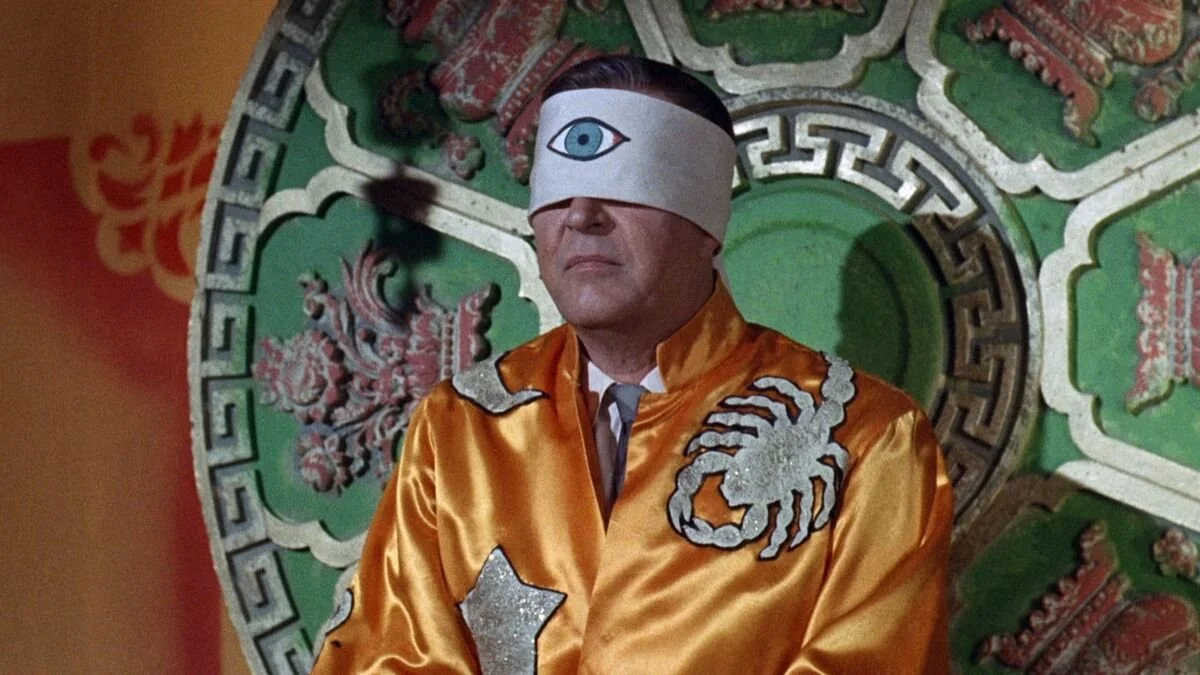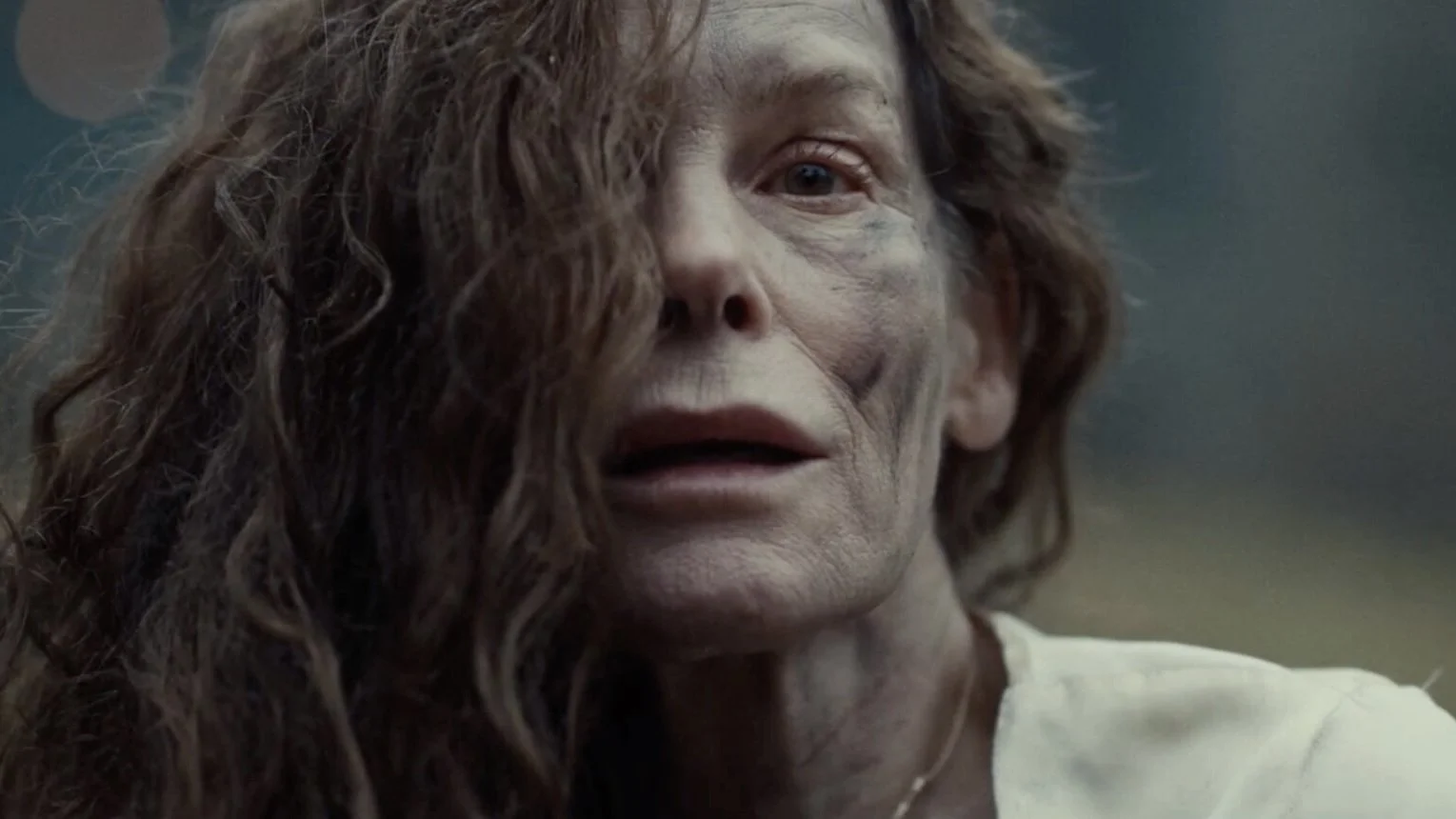Danse Macabre #7: Film Review — "X: The Man with the X-Ray Eyes" (1963)
In 1981, Stephen King published Danse Macabre, a work of non-fiction wherein the author acts as a tour guide through the history of horror. He addresses the social issues and political conflicts that have influenced creators over the years, and the ways creators have influenced each other.
King closes out the volume by recommending 96 films and 113 books released during the 1950-1980 period that he feels have significantly contributed to modern genre fiction. With this Fearsome Queer column, I’ll be making my way through those titles in no particular order.
Stephen King must think very highly of this Roger Corman picture. He not only recommends X: The Man with the X-Ray Eyes in Appendix I of Danse Macabre—but, in “Chapter VI: The Modern American Horror Movie—Text and Subtext,” he also includes it on his twenty scariest movies from 1950-1980 list, which doubles as a syllabus for “basic coursework in films of gut-level horror.” But now that I’ve seen X: The Man with the X-Ray Eyes, I’m afraid that I do not match King’s enthusiasm.
To be clear, I like this movie, but I don’t find it terrifying in quite the way King does. For King, X: The Man with the X-Ray Eyes is a “gross-out” “kind of Lovecraftian horror movie.” And I don’t disagree with that take. But I, on the other hand, projected silly gay stuff unto it instead and found my own horror—I believe this is what scholarly folk call a “queer reading.”
It helps that I came to this film with zero preconceived notions. To be frank, I hadn’t even heard of it before picking up Danse Macabre. I, of course, knew the work of Roger Corman (Legend), and I knew Ray Milland (Republican), thanks mainly to Alfred Hitchcock’s Dial M for Murder and his Oscar-winning turn in Billy Wilder’s The Lost Weekend. But this film in particular, it just so happens, had never-before crossed my radar, unlike the majority of the Danse Macabre recs. For that reason, in addition to the eye-grabbing title, I was eager to check it out. Plus, every Roger Corman flick I’ve seen has been worth watching at least once.
Now, I’ve been making an effort to avoid weaving too much plot summary into my reviews, but in case you’re like me and have little-to-no familiarity with this movie, here’s the brief premise King himself provides:
Once upon a time there was a man who invented some magic eyedrops, and he could use them to see through people’s cards in Las Vegas and make lots of money. He could also see through girls’ clothes at cocktail parties, which was maybe not such a nice thing to do, but wait a minute. This man kept seeing more…and more…and more…
Not gonna lie, I watched this movie before going to a mixer for queers new to my area, and gal… I could’ve used those eyedrops that evening! I ended up at a neighborhood cocktail bar sipping a whiskey sour amidst 40 f-slurs, and I innocently wanted to know what else I could’ve been swallowing, that’s all. You must understand, I’m really not a lecherous person; I’m just carnally curious and very homosexual. Look, I’m sure I’d also use the eyedrops to do good, if I could, someway, I guess.
Even Dr. James Xavier (Ray Milland’s titular “X”), in the beginning, has noble-ish intentions for developing the eyedrops. According to him, mankind struggles to take in any more than 10% of what our bodies are actually capable of receiving, so he creates eyeball poppers a serum that allows a person to more easily relax the muscle tissue around the butthole experience the entire erect penis spectrum of ultraviolet light and x-ray wavelengths, for gay sex medical science reasons. The stuff works within seconds and lasts only a handful of minutes, but all the pleasures (and feelings of satisfaction) it brings can arouse a dangerous temptation to over-partake—at risk of permanent bodily mutations. And to think, Xavier just wanted to concoct a more efficient method with which to diagnose illness. Truth be told, he wanted to be viewed as almighty in his field.
A scientist attempting to out-god God is always fun to watch—praise be to Goth Queen Mary Shelley for inventing this time-honored formula that somehow makes stories at least a wee bit queer; or, at minimum, a tad subversive. In some instances, a man tries to build a man. Gay! In this instance… a man tries to chemically uninhibit his anal sphincter visual cortex so he can enhance sensation and reduce discomfort see through stuff and enjoy all the spectacular colors. Yep, gay!
It doesn’t take long for Xavier’s mischievous side to emerge. At this aforementioned party where he actively peers through the clothing of fellow attendees—women and men, by the way—he straight-up informs his female colleague, Dr. Diane Fairfax, that he has ocularly undressed her. And Fairfax doesn’t find it as weird or off-putting as you might predict?! Perhaps she has some 1960s normalized misogyny (haha naughty men lololol), or it’s simply a case of an all-male creative team being in charge (it’s not sexist if she likes it!), or maybe actress Diana Van der Vlis chose to play her character as more of an exhibitionist than the text otherwise suggests (work, bitch). Then again, that third one is probably how I’d react, but I’m a faggy show-off, not a woman of 1963.
Xavier’s masculine craving for knowledge eventually begins to drive him a smidge mad, prone to zealous outbursts that cause him to commit murder once or twice. And where does a uniquely talented person with a god complex who’s on the lam for homicide usually end up in flicks like this? You got it: As a carnival attraction, making money by correctly knowing how much change is in someone’s pocket or revealing the private secrets of naysayers to a raucous, paying crowd. This portion of the picture reminds me of Edmund Goulding’s fabulous Nightmare Alley, and it introduces us to one of the best characters.
The one and only Don Rickles plays Crane, the carnival barker. He is so smarmy in this role and actually delivers one of the film’s strongest performances. Roger Corman brilliantly leans on Rickles’ reputation as an insult comic and master roaster. When cynical audience members cast doubt upon Xavier’s abilities, Crane retorts with a verbal jab that simultaneously hushes and mocks the sourpuss in the stands, to the amusement of the rest. These moments add shades of humor to the film just as the narrative transitions into the darker second act. Rickles slickly rides the emerging darkness and lets Crane’s rapaciousness grow the more he learns ways to exploit Xavier.
The film is really tragic. Imagine never being able to close your eyes. Even with his lids shut, Xavier still sees something, always, no matter what. So of course the guy cracks—he can’t avert his gaze from the incomprehensible shit that no one else can or should be able to encounter. He sees beyond the edges of the universe, into other dimensions, toward new planes of existence. This is where King’s Lovecraftian angle comes in. Lovecraft is big on existential dread. His stories propose that way out in the cosmos, beyond our limits of understanding, lie unfathomable answers to the universe—suggesting the influence of colossal deity-like beings on our puny earthly lives. Men in Lovecraft’s stories who manage to attain this forbidden knowledge tend to go mad, suffer endlessly, or just die. King suggests that Xavier and the conceit of this film fit such a mould.
He has also hinted at an alleged alternate/extended ending (that I think he made up…) that would’ve rendered the conclusion even bleaker. I won’t elaborate further for fear of upsetting the spoiler-phobic, but if you’re curious it’s very searchable. And should you decide to “Ask Jeeves” about the ending of X: The Man with the X-Ray Eyes [Steve’s Version], you’ll also read that Roger Corman has since disputed the legitimacy of gossip queen Stephen King’s rumor—while admitting that [Steve’s Version] is better.
As is, it still lands, though. Ray Milland totally sells it, aided in large part by the special effects makeup in the final frames. It’s pretty damn gnarly; I wish could’ve seen a ’63 audience react to it. Likewise, I wonder what they’d make of the filmmaking. The “x-ray vision” POV shots, especially the psychedelic phantasm ones toward the end, are awesome. They feel like the inevitable repercussion of the kitschy defrocking going on in the first leg of the film. These nightmarish sights mark a point of no return for our protagonist—and a turning point for Corman as a director, I reckon.
The pre-X and post-X Corman films that I’ve seen so far are recognizably different. I won’t say his subsequent endeavors are a “step up” or anything condescending like that, but his films produced in 1963 and on do have a dash more, I dunno, splendor. I’m very much looking forward to (re-)watching and reviewing the four other Roger Corman films in Appendix I: Not of This Earth (1957), The Pit and the Pendulum (1961), The Masque of the Red Death (1964), and The Tomb of Ligeia (1964). I get King’s enthusiasm for this particular film. Maybe I don’t find it as flat-out scary as he does, but it is a special and conceptually unnerving movie—and sorta gay, if you want it to be!







